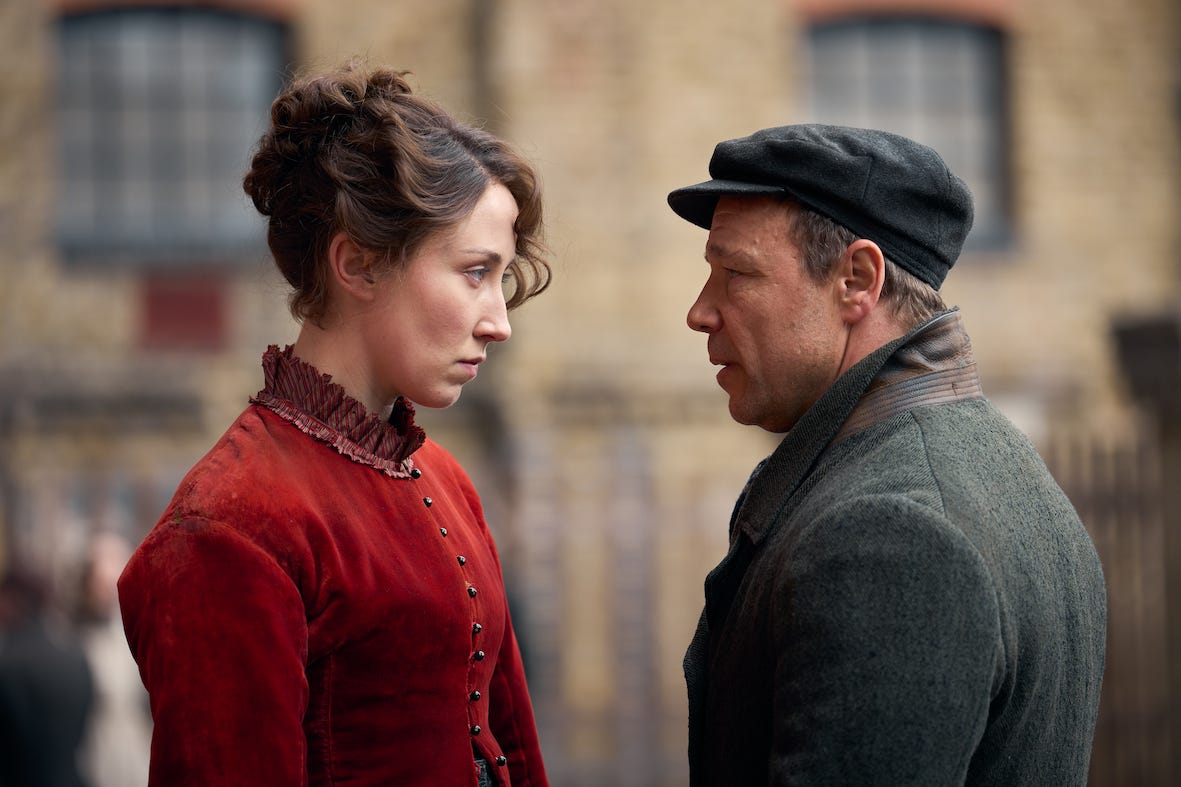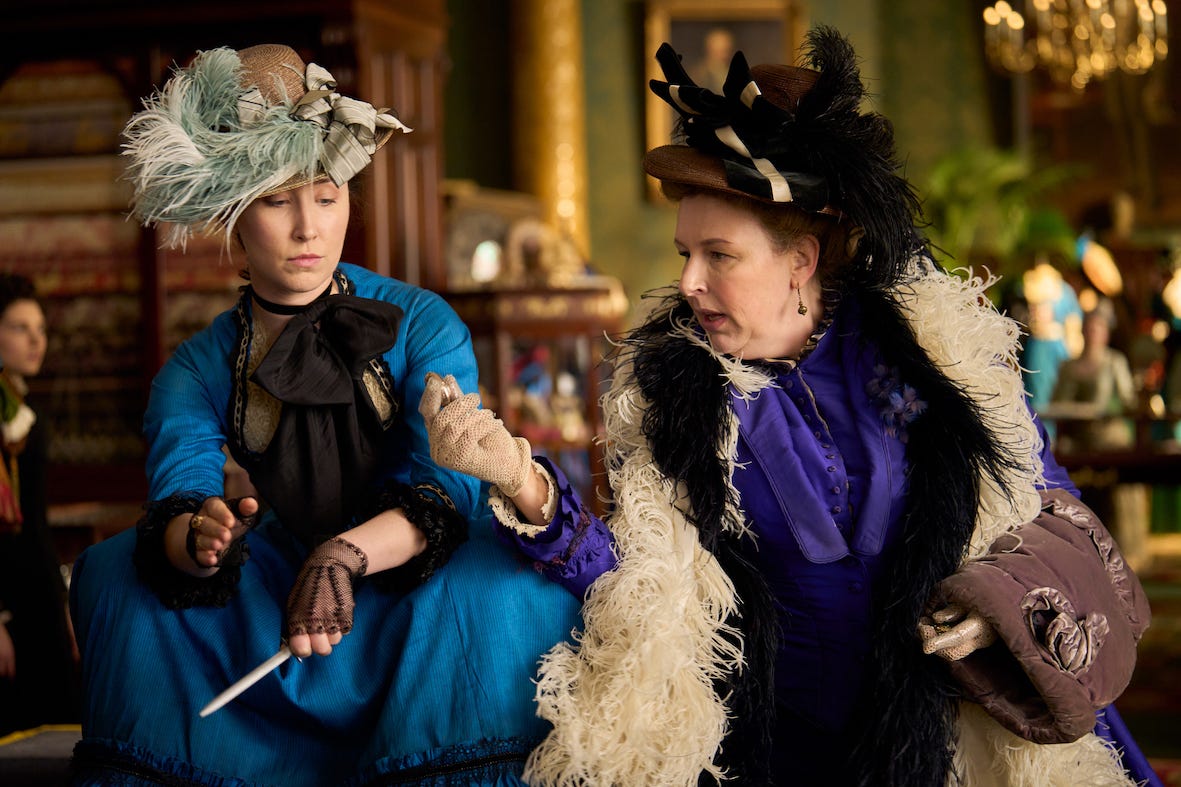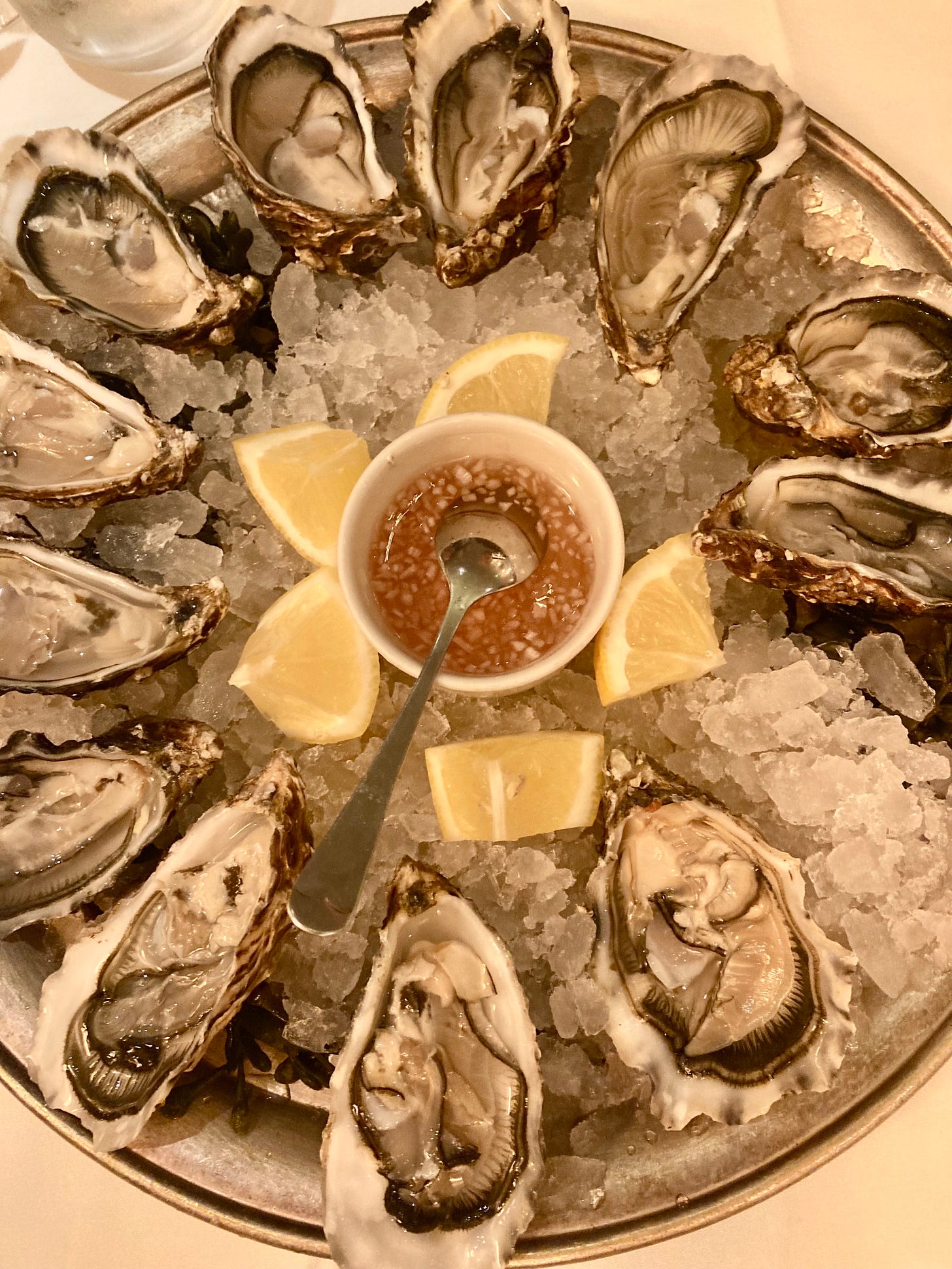A Thousand Blows, Oysters and a Real Shucker Punch
Shell-ebrating a knock-out show with some fancy seafood
What to watch tonight: A Thousand Blows (Disney+)
I’ll be honest, the idea of A Thousand Blows is normally something I’d usually steer clear of: a bare-knuckle boxing drama set in the knees-up-Muvva-Brown era of the Victorian East End. But this Steven Knight-created series stars Stephen Graham, and I think he’s such an incredible actor that frankly I’d pay to watch him read the back of a shampoo bottle.
So it’s a nice surprise when a series you don’t really envision being that into defies expectations, and A Thousand Blows did just that. For as much of the (true!) story is about a Jamaican immigrant called Hezekiah Moscow (Malachi Kirby), punching and swinging his way into the Cockney community; the other, lesser-publicised focus of the show is on a woman called Mary Carr, played by Erin Doherty.
Episode one has a cold, hard intro into the action, with Carr giving birth in public in the cobbled, run-down streets of the capital. After puffing and panting and her waters breaking she suddenly stops, stands up and runs off. It’s all a scam! Carr is actually the leader of 40 Elephants, a real-life, bad-ass gang of women who terrorised all the boroughs of London in the late 1880s, with the fake labour being just one of their cons to pickpocket onlookers. I was instantly hooked: why had I never heard about this gang or Carr before?
It's like The Bling Ring, but a century earlier. And Doherty makes a staggering transformation from The Crown's yung Princess Anne to the foul-mouthed, "heart of black" Cockney gangster, who sometimes summons the men she wants to shag to her guesthouse, and other times, holds them up at gunpoint and threatens to throw their bodies in the Thames for the dogfish to eat.
From The Crown, I – dumbly – presumed Doherty was an upper-class actor coming from a gilded background, but then I saw this interview with her on This Morning with her shockingly different accent and realised that in reality, it was quite the opposite. Almost like she was…an actor?? She totally kills this role, and she makes a more-than-worthy screen-partner to Graham, who plays Sugar Goodson, the scary, hard-as-hell boxer who terrorises their community like Carr, but in a different way. There’s some sort of history hinted at between them, and their shared scenes vibrate with a dark energy.
There’s murders, thefts and – obviously – tense boxing scenes galore (I enjoyed Daniel Mays as the crooked ringleader); the custom-made period Thames-side set looks grittily fitting and the costumes are great too. All in: it’s a total knockout of a show – and I hear series two was filmed back to back with the first, so hopefully there won’t be too long of a wait before the next round.
What do they eat and drink in A Thousand Blows?
There’s one lovely scene where the 40 Elephants – prior to going on a smash-and-grab up the West End – sit down for a feast of oysters. While that may seem like a decadent treat (and you’d be hard-pressed to get change from £20 for six these days), these molluscs were a common snack back in Carr’s day.
Humans have actually been eating them for hundreds of thousands of years, and fire-scorched oyster shells have been discovered on historic digs, suggesting that early man liked to pop ‘em open over a flame (somewhere, right now, a trust fund baby’s pop-up street food radar has been activated).
While enjoyed by the Greeks and Romans, they went in and out of fashion and by the 1800s in London, they were hugely popular, and sold on practically every street corner in the city by some 4,000 licensed shuckers. Because they were so cheap and plentiful, the working classes used them as a substitute for meat in stews and soups, and a popular dish at this time was oyster pie. In fact, as Sam Weller in Charles Dickens’ The Pickwick Papers notes: “It’s a very remarkable circumstance that poverty and oysters always seem to go together.”
In the year 1864 – about 15 years before A Thousand Blows is set – more than 700 million oysters were consumed in London alone; now that figure is more like 13 million a year. So, why wouldn’t these ladies throw a platter of these down before their heist on Harrods?
Alongside their seafood snack, they’re drinking some sort of murky brown liquid – most likely “mother’s ruin”, or gin, or perhaps it was some of the knock-off prison hooch-type booze that the Scottish brewer was trying to pass off as “Jamaican” rum. There’s definitely no Chablis or Champagne that is the far more common pairing these days. Still, they swill it all down with gay abandon; seriously, what’s not to love about these broads?
What you should eat and drink while watching A Thousand Blows
Fuck it: let’s get oysters! ATB is as good a reason as any to indulge in the Victorian favourite, and if Grace Jones can shuck her own oysters then so can you. (For an incredibly practical reason, apparently: “If you get someone to shuck your oyster who doesn’t do it right, you get a lot of shell inside it, which can cut your gums”, she explained).
My favourite place to eat oysters in the UK, without a doubt, is Wheelers Oyster Bar in Whitstable, the oldest seafood restaurant in the country. I wrote somewhat of a love letter to the place back in 2016 for Munchies, when the place was celebrating its 160th birthday.
So whether you’re heading to Billingsgate market for your oysters (recommended! I think you’re not a true Londoner until you’ve done a 5am fish run at the huge fish market out by Canary Wharf, complete with bacon-and-scallop roll at the caff afterwards) or you’re buying from a more boujie spot, this is what you need and what you need to know to prepare them":
Oysters a la Mary Carr
6 oysters (or 12 if you’re sharing)
Lemon wedges
One shallot, finely diced, mixed with 3 tablespoons of red wine vinegar (this is called mignonette, and is a traditional topping for oysters)
Tabasco sauce (optional)
An oyster shucker
A tea towel
Plate with crushed ice
Method:
Wrap the tea towel around the oyster/your hand (to protect your hand if the shucker slips). Then, as Wheeler’s head chef Mark Stubbs told me: “Make sure you start with the deep shell side set down, as if they’re upside down, all that liquor will drain out from them.”
“The heel [hinge] of the oyster: you want to hit it just off the left-hand side, as the right-hand side is the muscle,” so wiggle the shucker into the shell. “Once the shucker is in, slide it along the muscle right the way into the back to release it. The top shell will pop off, then in one clean cut, turn it over and present it on to the plate.”
Remember, if you’re taking the shucker out of the oyster and putting it back in, make sure to wipe it on the tea towel, so you’re not putting dirt, grit or shell back into it.
Place the oysters on a plate, on top of crushed ice and serve, with a tiny squeeze of lemon, half a teaspoon of the mignonette dressing or a dash of Tabasco.
And to drink? For gawwd’s sake, not Oyster Bay wine. A nice minerally natural white or orange would go nicely, I love anything from Alsace for this, my current favourite being this Pinot Blanc from Anna, Andre et Yann Durmann, or their Pet Nat, if you’re pushing the boat out, like the 40 Elephants, who are soon to be celebrating the spoils from London’s fanciest department store haul.
Cheers!







